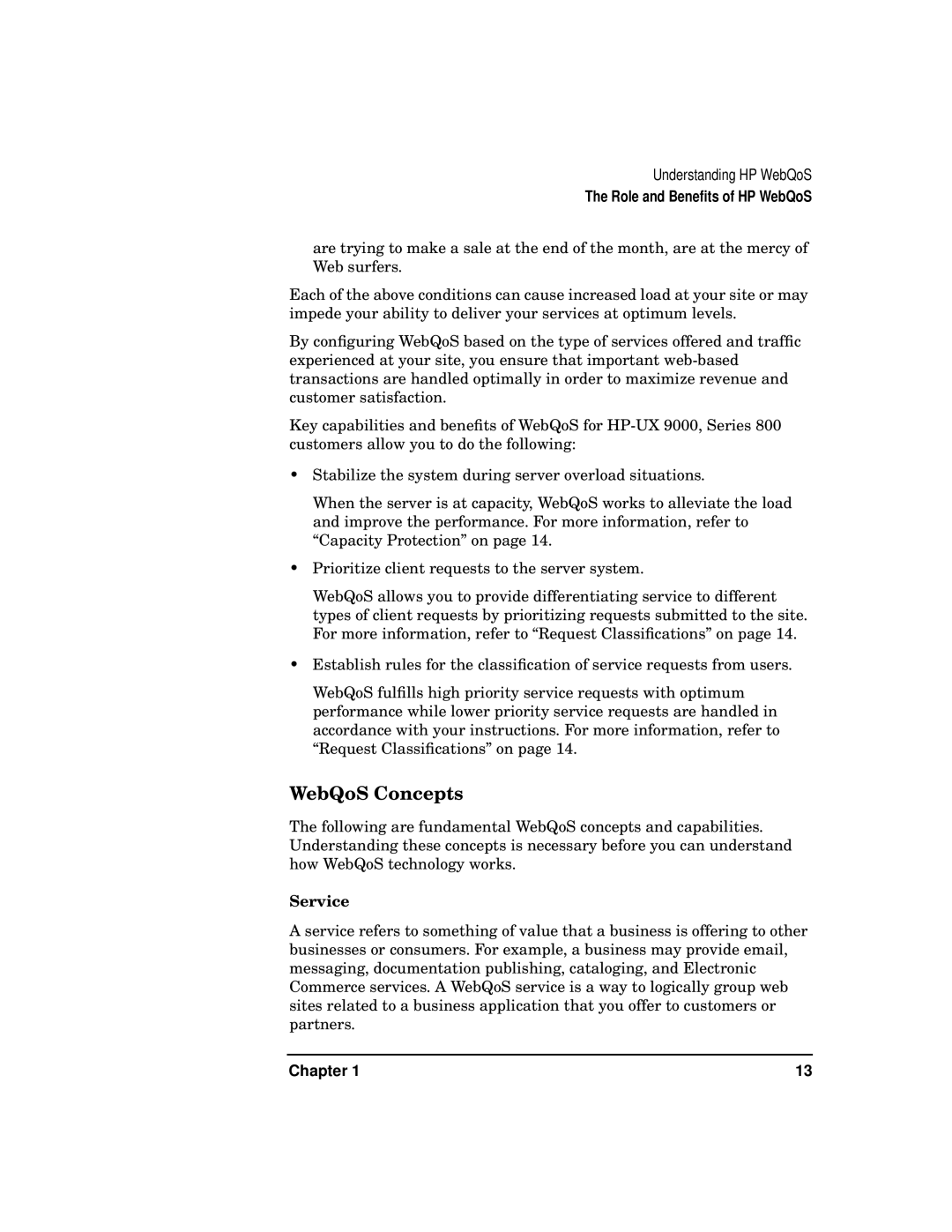Understanding HP WebQoS
The Role and Benefits of HP WebQoS
are trying to make a sale at the end of the month, are at the mercy of Web surfers.
Each of the above conditions can cause increased load at your site or may impede your ability to deliver your services at optimum levels.
By configuring WebQoS based on the type of services offered and traffic experienced at your site, you ensure that important
Key capabilities and benefits of WebQoS for
•Stabilize the system during server overload situations.
When the server is at capacity, WebQoS works to alleviate the load and improve the performance. For more information, refer to “Capacity Protection” on page 14.
•Prioritize client requests to the server system.
WebQoS allows you to provide differentiating service to different types of client requests by prioritizing requests submitted to the site. For more information, refer to “Request Classifications” on page 14.
•Establish rules for the classification of service requests from users.
WebQoS fulfills high priority service requests with optimum performance while lower priority service requests are handled in accordance with your instructions. For more information, refer to “Request Classifications” on page 14.
WebQoS Concepts
The following are fundamental WebQoS concepts and capabilities. Understanding these concepts is necessary before you can understand how WebQoS technology works.
Service
A service refers to something of value that a business is offering to other businesses or consumers. For example, a business may provide email, messaging, documentation publishing, cataloging, and Electronic Commerce services. A WebQoS service is a way to logically group web sites related to a business application that you offer to customers or partners.
Chapter 1 | 13 |
